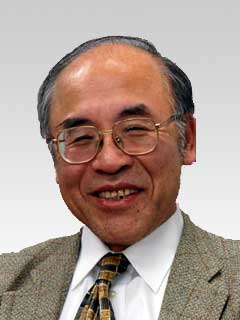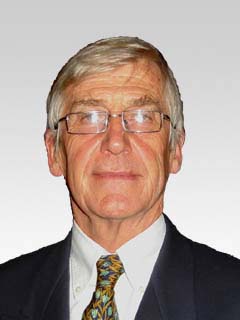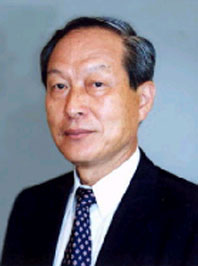Invited Talk
 Dr. Hidenori Kimura (RIKEN).
Dr. Hidenori Kimura (RIKEN).
Title. Control and Life ----- From Homeostasis To Allostasis
Abstract.
The notion of homeostasis, which was proposed by W.Cannon in 1930's, has been the most important key issue in the long history of interplay between life sciences and control. It explains the capability of living organisms to keep internal states constant in face of environmental changes. However, human being nowadays is suffering from various chronic diseases such as diabetes, hypertension, depression and so on, in spite of the recent remarkable extension of the life expectancy. For dealing with these diseases, homeostasis must extended its scope to include the factors such as (1) long term effect of environmental changes, (2) cognitive interruptions of higher brain to tissue regulations, and (3) complexity of neuro-endocrine-immune interactions in regulatory functions of the whole body. Allostasis is a new concept that addresses these factors in proper way which specially emphasizes the adverse effects of cognitive capability of human being on homeostasis. In this talk, brief overview of the transition from homeostasis to allostasis is given with its relevance to control. We present our study
on a chronic disease analysis.
Biography.
Hidenori Kimura got the degrees of Bachelor, Master and Doctors from the University of Tokyo in 1965, 1967 and 1970, respectively. He joined the Department of Control Engineering at Osaka University in 1970 where he was engaged in research and education of control theory and its applications for 17 years. Meantime, he stayed in UK uring academic years 1974-75 as a scholar of British Council. In 1986, he moved to the department of mechanical engineering for computer- controled machinery and then joined the Graduate School of the University of Tokyo in 1995. He stayed at Delft University of Science and Technology as a guest professor in 1994 and at the University of California at Berkeley as a Springer Professor in 1995. In 2004, he retired the University of Tokyo and joined the Institute of Physical and Chemical Research where he is working as a team leader of Biological Control Systems Laboratory. He is now a Council Member of IFAC representing Japan, a Managing Editor of Asian Journal of Control, an associate member of Scientific Council of Japan, and the President of Asian Control Association. He was a General Chair of MTNS 1991 and CDC 1996. He is a Fellow of SICE and IEEE. He was awarded SICE paper awards four times, IFAC Paper Prize twice and George Axelby Award in 1984. His current research interest is in biological control.
 Mr. Alain PoncetiCERN).
Mr. Alain PoncetiCERN).
Title. The LHC at CERN: technical frontier aspects of the world largest scientific instrument
Abstract.
CERN is in the process of completing the installation of the Large Hadron Collider (LHC) in its 27 kms circumference tunnel in the vicinity of Geneva,Switzerland.The first proton collisions are expected in november 2007.
Approved in 1994,the LHC is a unique instrument which will serve the whole world high energy physics community.Co-financed by 25 European nations with participations from many non-member states,this world-largest scientific instrument gathers many technical challenges which are met with frontier technologies in many fields,such as superconducting magnets,HeII cryogenics,superconducting RF,control systems,fast data acquisition and communications,etc..
After an overall description,this talk will survey the various systems of the machine,highlighting the domains in which technology frontiers have been reached and sometimes trespassed.
Biography.
Mechanical Engineer graduated from ENSAM-1968 (Ecole Nationale Superieure d'Arts et Metiers-Paris-France)
Master of Science in Aerospace Engineering (Penn State University-Pennsylvania,USA)-1970
Research Engineer in high voltage switchgear at Schneider Electric Grenoble,France,1972-1975
Accelerator Engineer at ISR (Intersecting Sotrage Rings) CERN,1975-1978
Engineer in charge at (Antiproton Accumulator) 1978-1990
Head of the Vacuum Section-PS Division 1980-1990
Head of the Engineering Group ESH in MT Division,LHC project 1990-1995
Deputy Division Head in MT,same period
Head of the Cryostat and Integration Group,LHC project,AT
department,1996-to date
 Dr. Richard Volpe(NASA/JPL).
Dr. Richard Volpe(NASA/JPL).
Title. Robotic Space Exploration Technology Development and Mission Infusion
Abstract.
The Jet Propulsion Laboratory, California Institute of Technology, is NASA's lead center for robotic exploration of the solar system. While every spacecraft is a kind of robot, there are unique challenges in sensing, control, and system design for in situ planetary exploration. The Mobility and Robotics Systems Section at JPL is addressing these challenges in the areas of surface navigation, aerial and subsurface access, and safe and precise landing. This talk will give an overview of our relevant mission work, as well as the ongoing research that supports it.
Biography.
Richard Volpe is Manager of the Mobility and Robotic Systems Section at JPL. The section is a team of over 80 robotics engineers doing research and spaceflight implementation of robotic systems for Roving, Ballooning, Drilling, and other modes of in-situ planetary exploration. Key capabilities include vision, sensor processing, advanced controls, man-machine interfaces, simulation, and system design. From 2001 through 2004, Richard served as the manager of Mars Regional Mobility and Subsurface Access in JPL's Space Exploration Technology Program Office. In addition to guiding technology development for future robotic exploration of Mars and the Moon, he has been actively involved in 2003 & 2009 rover mission development. This has included managing internal JPL rover technology development, as well as external university research funded by the Mars Technology Program. Richard received his M.S. (1986) and Ph.D. (1990) in Applied Physics from Carnegie Mellon University, where he was a US Air Force Laboratory Graduate Fellow. His thesis research concentrated on real-time force and impact control of robotic manipulators.
 Prof. Yoshimasa Yamano(Institute of OISHISA Science).
Prof. Yoshimasa Yamano(Institute of OISHISA Science).
Title. Estimation of "Oishisa" of Udon (Japanese noodle)
Abstract.
Since noodle was first introduced from China about 1200 years agoA much efforts have been made to the noodle to fit to Japanese eating Kansei (sensitivity). The improved noodle is called as gUdonh and in this area, Sanuki(the old name of Kagawa Prefecture) the udon having very characteristic texture was named Sanuki Udonh ,Kingdom of udon.
At first, hOishisah, total expression of Japanese sensitivity for food is defined, especially focused on texture and then its estimation methods are explained briefly. Finally, the ways to prepare Sanuki Udon and how to estimate the oishisa of the noodle are introduced.
Biography.
Food scientist graduated from Kyoto University ,1963
Research member in R & D Center of Toyo-seikan (can making) Co., 1963-1968
Lecturer, Associate Professor and Professor in Kagawa University,1968-2001,
Professor Emeritus, Kagawa University ,2002
Doctor of Agriculture in Kyoto University,1977-
Dean of Student Affairs, Kagawa University , 1994-1996
Dean of Faculty of Agriculture , Kagawa University, 1999-2001
Invited Professor, University of Missouri 1976-1977, Agricultural University, The Netherlands, 1986 and Univaisity of New South Wales ,Austraria,1986-1987
Chairman of Institute of Oishisa Science 2003-
Prize from Japanese Society for Food Science and Technology-1996
 Dr. Hidenori Kimura (RIKEN).
Dr. Hidenori Kimura (RIKEN). Mr. Alain PoncetiCERN).
Mr. Alain PoncetiCERN). Dr. Richard Volpe(NASA/JPL).
Dr. Richard Volpe(NASA/JPL). Prof. Yoshimasa Yamano(Institute of OISHISA Science).
Prof. Yoshimasa Yamano(Institute of OISHISA Science).